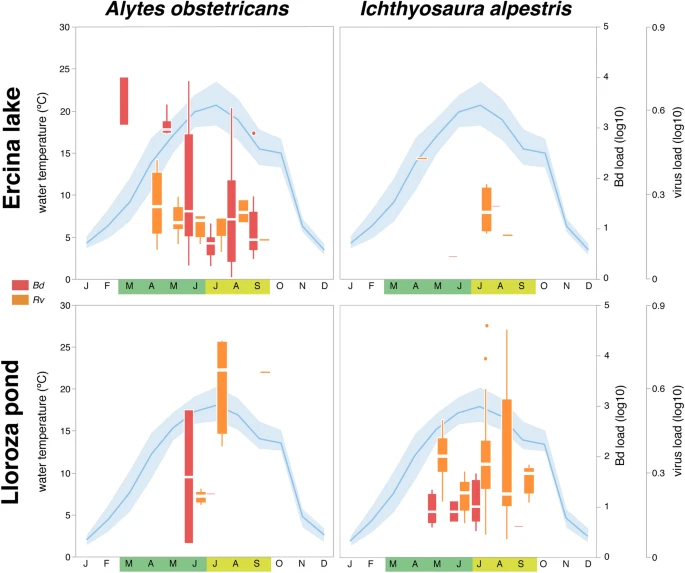The global collapse of frogs and other amphibians due to the amphibian chytrid fungus exacerbated malaria outbreaks in Costa Rica and Panama during the 1990s and 2000s, according to new research. The findings provide the first evidence that amphibian population declines have directly affected human health and show how preserving biodiversity can benefit humans as well as local ecosystems. Leer más.





We found that the co-occurrence of both pathogens in a particular host is not common except in highly susceptible life-stages, and that single infections are the most common situation. Moreover, we found that the occurrence of one pathogen in a particular host did not predict the occurrence of the other. We attribute these results to the niches in which both pathogens proliferate in amphibian hosts. Leer más.

In the lizard world, flashy colors attract the interest of females looking for mates. But they can make colorful males desirable to other eyes, too — as lunch. L. Swierk, J. F. F. Boyer, J. Chang, M. Petelo, S. M. Drobniak. Intrasexual variability of a conspicuous social signal influences attack rate of lizard models in an experimental test. Evolutionary Ecology, 2020; DOI: 10.1007/s10682-020-10085-7 Leer más.
L’informe està basat en dades i evidències científiques recollides per milers de persones voluntàries a tot el territori. Es tracta d’una oportunitat única per conèixer l’estat de la biodiversitat a Catalunya i, per tant, és un document clau per orientar les polítiques i accions de conservació que ens han de permetre aturar la pèrdua de biodiversitat a casa nostra. Leer más.
Scientists have discovered that young alligators have the ability to regrow their tails up to three-quarters of a foot — about 18 percent of their total body length. The researchers speculate that this ability to regrow tails gives the alligators a functional advantage in their murky aquatic habitats. Leer más.







